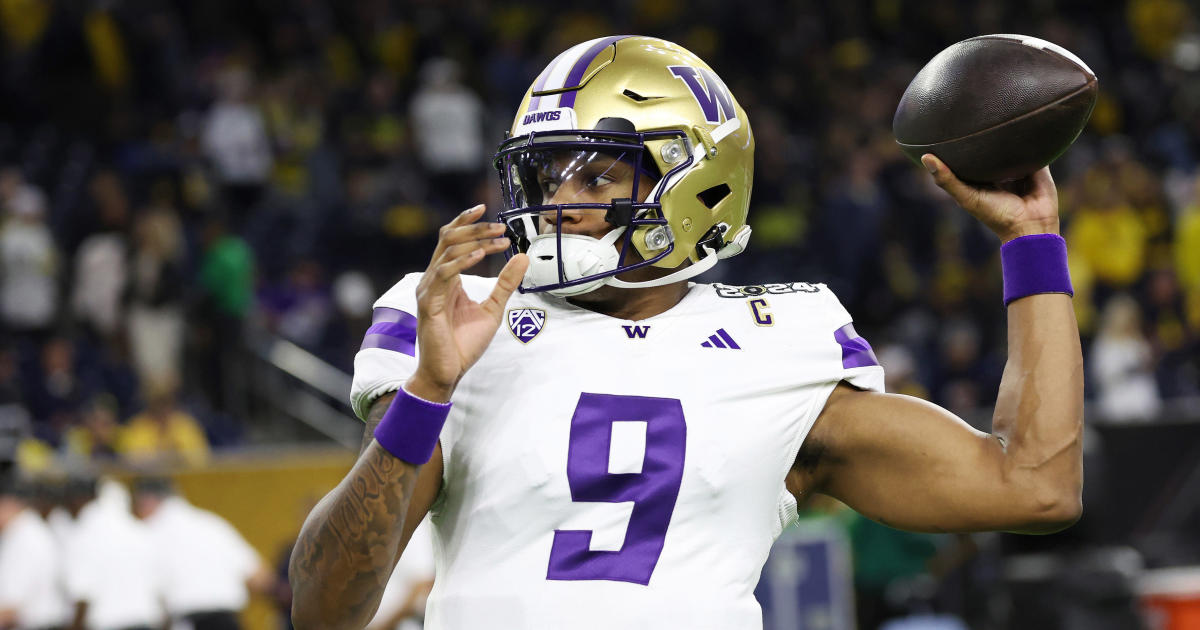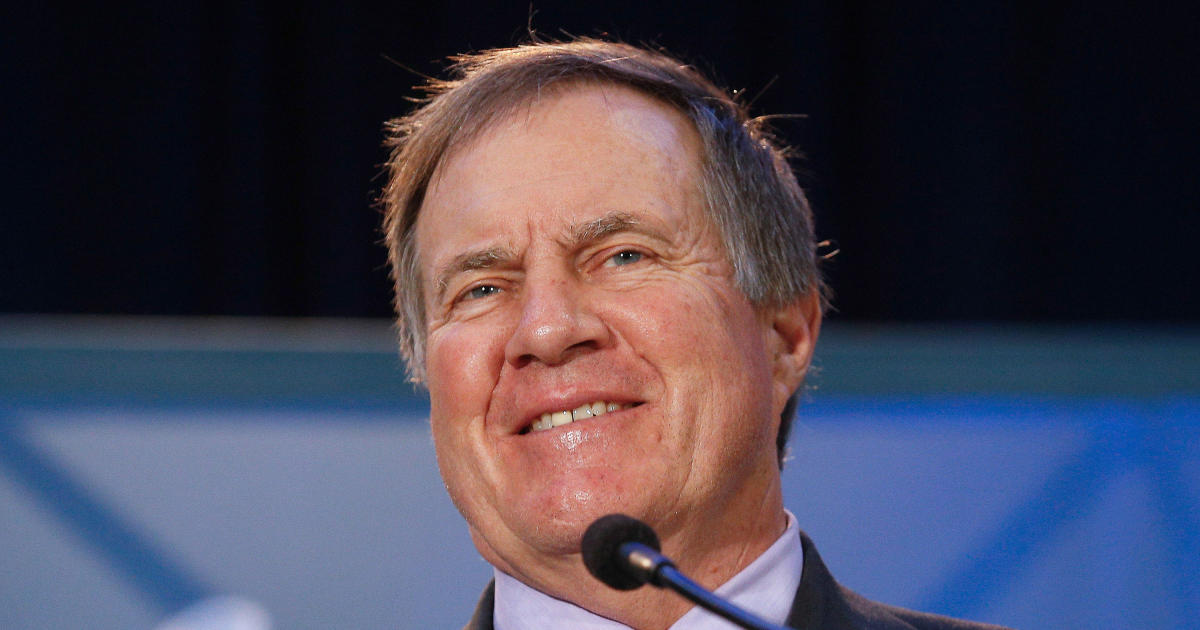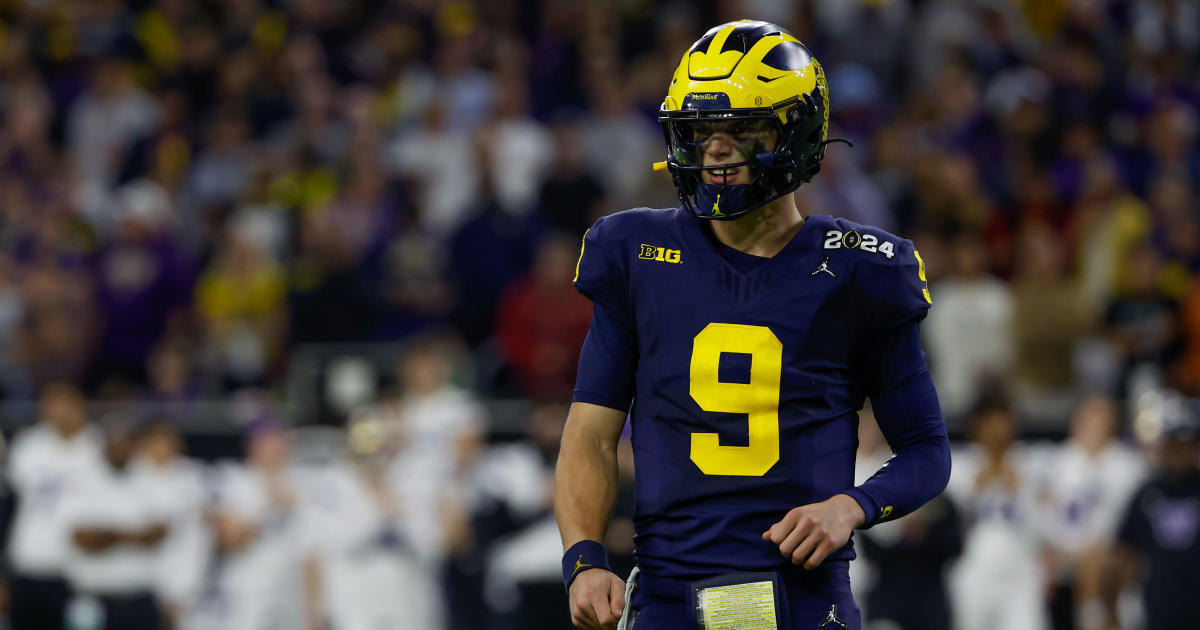Bill Belichick's Football History Lessons Remain On Point, More Than A Decade Apart
By Michael Hurley, CBS Boston
BOSTON (CBS) -- Down in Foxboro, the focus at all times is always firmly fixed on that week's opponent. There's always a job to be done, and nothing that happened last week or last year or last century carries importance. Nor does anything that might happen in two weeks or two years or two decades. Everything, at all times, is focused on the current week's opponent.
Except on Fridays.
In his last meeting with the media of the week, Bill Belichick tends to open up a bit whenever any topics of football history are raised by reporters. That's not to say it's a weekly occurrence, but typically, if a reporter wants to learn about the evolution of the 3-4 defense or the history of the Steelers under Chuck Noll and Bill Cowher, then Friday is typically the day to ask. More often than other days, Belichick will indulge. (It's so well known that there's actually a new book about that very topic, titled "Fridays With Bill.")
That was certainly the case this week, when Belichick was asked a question about the shift in usage of fullbacks, from the time when they were used regularly as ball carriers and pass catchers, to the times when they've come to largely be used solely as blockers.
Belichick gave a thorough answer -- roughly two full minutes of uninterrupted fullback talk -- which ended up generating the usual headlines about Professor Belichick giving a history lesson.
While the brief football history class was notable in its own right, it stuck out to me because it brought to mind a comment Belichick made at a press conference back in 2007. That press conference came during Thanksgiving week of the undefeated regular season, and it stands out to me because it came during the week of the first Belichick press conference I ever attended. I was a college senior, tasked with shadowing a professional reporter for one of my final journalism classes. Considering I wanted to be a sports writer, I asked the best in the business -- Mike Reiss, who was at The Boston Globe at the time -- if I could tag along for a day. Fortunately enough, Mike said yes, and before I knew it, I found myself in a room with Bill Belichick at Gillette Stadium.
Most likely because of the unique circumstances of that otherwise forgettable press conference, I remember it pretty vividly. I also remember the story that Mike was writing for the next day's newspaper. And so when Belichick began chronicling the history of fullbacks this week, I was instantly reminded of that day back in 2007. And thankfully, through the magic of the internet, what Bill said back in 2007 could be found with great ease.
Here are some excerpts of what Reiss wrote on Nov. 24, 2007:
"Heath [Evans] is a lot like the fullbacks from the '70s and early '80s when I came into the league, and prior to that going back into the '60s," he said Wednesday. "The fullback and halfback, their carries were kind of evenly balanced. You had Franco Harris and Rocky Bleier. You had fullbacks that carried the ball - [Larry] Csonka and [Jim] Kiick, [Jim] Taylor and [Paul] Hornung. The halfbacks blocked for the fullbacks and the fullbacks blocked for the halfbacks. That's kind of what Heath is."
...
As for the changes to the fullback position over the years, Belichick provided a CliffsNotes-type version of the evolution. He recalled that in 1975, his first year in the NFL as an assistant with the Baltimore Colts, the fullback was as much a runner as a blocker. That carried into the early '80s.
But the I-formation - in which a bruising fullback lined up in front of a more elusive running back - soon became more prevalent.
"When teams went to the I-formation, then you really, in essence, put a guard in the backfield and you gave the ball to one guy," Belichick said. "In the I-formation, there are two backs but it really is a one-back set because the tailbacks get 90 percent of the carries, if not more."
Soon enough, Belichick noted that teams wanted more flexibility out of the fullback position. He pointed to the Redskins, under coach Joe Gibbs, as an example.
"They said, 'Why put someone who is basically a lineman back there? Let's get another tight end or let's get a guy who's got a little more playmaking ability.' That's kind of how the game has evolved."
It was interesting at the time, because the high-flying, record-setting spread offense of the 2007 Patriots still managed to incorporate a fullback pretty regularly. And though the Patriots' offense may hay have lacked a regular, reliable fullback in the years that followed Evans' departure, it's a role that's been filled by James Develin for the past half-decade.
And it was Develin's contributions to the offense that prompted the chat this week, during which Belichick replied to a question about the evolution of fullbacks by saying this:
"I'd say in the '70s with college football really, I-formation. [John] McKay and people like that and then certainly by the '80s you had one runner, so the one-back teams with Coach [Joe] Gibbs and [Don] Coryell and people like that, Mike Martz and so forth. Those guys all went to one-runner and the blocker was the blocker, so that became instead of the fullback, sometimes the tight end. It was really in the '60s with the Jim Browns and Jim Taylor and really all of them. [Rocky] Bleier and [Franco] Harris were probably the last kind of – actually Harris carried the ball more than probably Bleier did and they weren't really an I-formation team.
"I'd say it kind of transitioned from there, and then when guys like [O.J.] Simpson and guys like that came into the league, the guys they put in front of them – with Simpson they put two guards in front of him. [Paul] Seymour was the tight end, [Jim] Braxton was the fullback and they were both offensive lineman, basically, and so you knew who was getting the ball rather than having another ball-carrier back there. They just had another, I would say, basically, an offensive lineman. But whether he carries the ball or doesn't carry the ball, the blocking angles from the backfield are different than they are from the line of scrimmage, and the ability to build a four-man surface or a three-man surface after the snap is different than being in a four-man surface and then trying to get to a three-man surface or being in a three-man surface and trying to get to a four-man surface by running the guy all the way across the ball. There's different blocking angles. It's just a fundamental difference."
Obviously, fullback history lessons aren't the most exciting topics in the sports world. They don't fill up phone lines on talk radio or occupy full segments on television talking head shows.
But it's nevertheless interesting and pretty neat that arguably the greatest coach in NFL history and certainly the best coach of his generation still dishes out historical information with ease and regularity. Though the coach often gets criticized nationally for his terse, occasionally gruff answers at press conferences, there's just no doubt that if you pay close enough attention, you'll be able to learn quite a bit about the sport of football.
You can email Michael Hurley or find him on Twitter @michaelFhurley.



